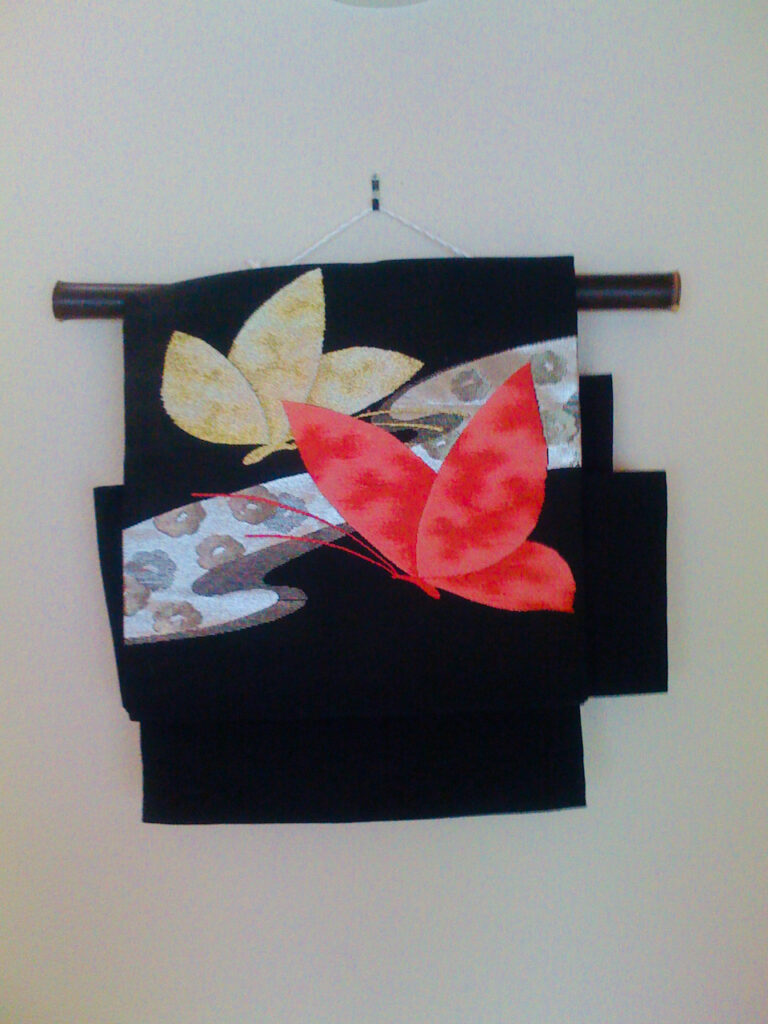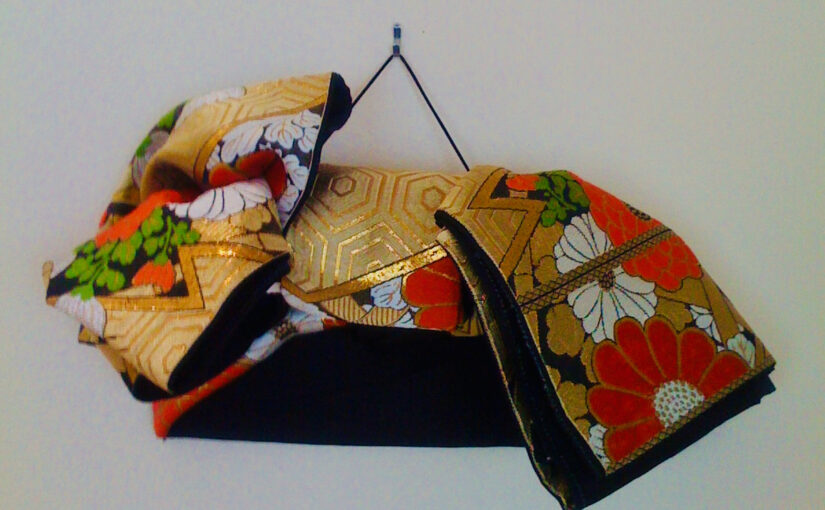Obis are wearable art!
Photo by Author Akemi Sagawa
If you see a woman in Japanese kimono, you also see a long, broad sash tied about the waist over it. The sash is called obi. Its function is to secure a kimono and avoid it from falling open.
Obi used to be a simple narrow sash, but over time it became wider. In Edo period (1603 – 1868), many different ways of tying obi emerged.
Now that western clothes are dominant in Japan, vintage obis are so abundant. Visit a second-hand kimono store, you will find a pile of colorful silk obis sold dirt cheap. If the craft person who painstakingly wove that obi sees his/her work in that pile, how would s/he feel? My heart hurts whenever I think about that.
People in the US, on the other hand, are fascinated by the intricate designs and colorful patterns of obi. Some use an old obi as a table runner and others hang it on the wall as a decoration.
How can I give these vintage obis a second life? What can I do to keep the original length but present it in a much more interesting way than merely folding It into two and hanging it?
I began trying to tie the obi the same way as we would wrap around the kimono and make it a hanging art.
What do you think?



Now whenever I go back to Japan, I purchase a couple of vintage obis and bring them back to Seattle. I make these obis into ranging arts and donate them as auction items at Holiday Dinner of Japan-America Society.
The obi is no longer worn, but its beauty remains on the wall in somebody’s house, thousands away from the original maker.
